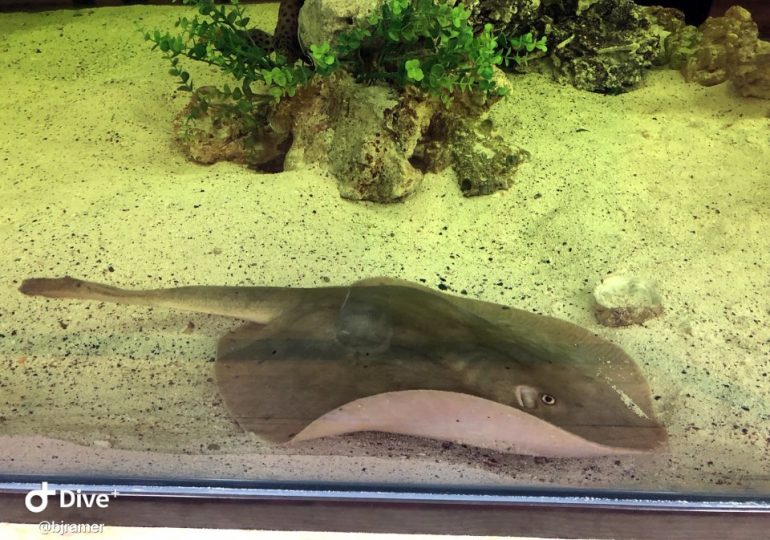A NORTH Carolina aquarium has been rocked by a mystery pregnancy after a stingray got knocked up in a tank with no males.
Charlotte the stingray, who is due to give birth any day now, may have reproduced on her own or with the help of a very unlikely mate.
Aquarium & Shark Lab by Team ECCO/FacebookCharlotte the stingray appeared to have a solo-pregnancy[/caption]
Aquarium & Shark Lab by Team ECCO/FacebookIt has mystified the aquarium staff as there were no male stingrays in the tank[/caption]
Staff believe a very unlikely culprit was involved in the pregnancyAquarium & Shark Lab by Team ECCO/Facebook
Team Ecco staff at the Aquarium and Shark Lab in Hendersonville noticed that Charlotte was beginning to swell up in September and were worried she may have cancer.
However, ultrasounds revealed that the stingray was in fact pregnant with several pups.
One possible conclusion is parthenogenesis – a process by which some animals can reproduce on their own.
The eggs are able to develop on their own without fertilisation and create a clone of the mother.
“I reached out to Dr. Rob Jones, the aquarium vet, and he identified the growths as eggs,” staff member Ramer said.
“We have no male ray. He said there have been few cases of parthenogenesis in rays.”
Dr April Smith, director of the North Carolina Science Trail wrote in a blog post: “This means the offspring are, typically, all female, and this occurs in a situation where there are no males present (i.e., zoo/aquarium usually, or perhaps a secluded natural environment like the deep sea).
“It’s a survival mechanism that allows for the preservation of a species.”
However, the aquarium staff believe it was likely down to an even crazier explanation.
They believe Charlotte may have mated with one of the one-year-old sharks that she shared a tank with in mid-July, the Mail reports.
“In mid-July 2023, we moved two one-year-old white spot bamboo males (sharks) into that tank,” Ramer said.
“We did not think there would be an issue,” he added.
“‘We started to notice bite marks on Charlotte, but saw other fish nipping at her, so we moved fish, but the biting continued.”
Sharks are known to bite during the mating process and Charlotte had several nips on her fin edges – which led the staff to begin speculating on the unlikely match.
Stingrays are closely related to sharks, they all belong to the same group of fish called Elasmobranchs.
However, they are genetically so far apart that this situation would be extremely rare.
The stingray is carrying up to four pups and is expected to give birth any day now – the original due date was February 9.
Once the pups are born, DNA testing will take place so the aquarium staff can finally solve the mystery as to who the father is or if there is a father at all.
They will be able to tell if they are a mixed breed or clones of their mother.
In February 2023, another mystery solo-pregnancy shocked a Japanese zoo, sparking a two year investigation.
Momo the gibbon – who lives in a tank alone – gave birth in 2021, which sent her zookeepers on a wild goose chase to find out who the father was.
Animals that can reproduce alone
NOT all animals need a mate – some are capable of producing offspring all on their own.
Parthenogenesis is a Greek word that means “virgin creation” – it describes a process by which some animals reproduce asexually.
They can produce eggs that develop on their own without fertilisation and the babies becomes clones of their parent.
And while it is still very rare in the animal kingdom, here is a list of species that have been known to:
Sharks
Stingrays
Skates
Komodo dragons
Starfish
Whiptail lizards
Python snakes
Marbled crayfish
Amazon molly fish
Wasps
Ants
Water fleas
Aquarium & Shark Lab by Team ECCO/FacebookThe staff are absolutely baffled and hope the mystery will be solved once the pups are born[/caption]
Leave a comment








